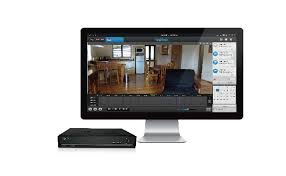What is Dome Analog Camera
What is Dome Analog Camera
A dome analog camera is a type of closed-circuit television (CCTV) camera with a dome-shaped housing. Here's a breakdown of its key features:
Shape and Design:
Dome-shaped housing: This design offers several advantages:
Discreet appearance: The dome shape makes it difficult to determine the direction the camera is pointing, adding an element of surprise and deterrence.
Vandal-resistant: The dome housing offers some protection against physical tampering or vandalism attempts.
Weatherproof: Many dome analog cameras are weatherproof, making them suitable for outdoor use.
Functionality:
Analog video output: Dome analog cameras transmit video signals in analog format over coaxial cables to a Digital Video Recorder (DVR) for recording and monitoring.
Standard Definition (SD) resolution: Analog cameras offer standard definition (SD) resolution, which is lower quality compared to high-definition (HD) capabilities of IP cameras.
Limited features: Compared to IP cameras, dome analog cameras generally have fewer features. However, some models might offer basic features like varifocal lenses for adjusting the field of view and day/night functionality for capturing images in low-light conditions.
Applications:
Suitable for: Dome analog cameras can be a good option for basic security applications in:
Indoor locations like retail stores, offices, and hallways where discretion and vandal resistance are desired.
Outdoor locations with limited coverage needs, such as building entrances or carports, where weatherproofing is necessary.
Limitations:
Lower image quality: Compared to IP cameras, dome analog cameras offer lower resolution video, making it more difficult to identify details like faces or license plates.
Limited scalability: Expanding an analog system can be complex as it requires additional coaxial cable installation for each new camera.
Outdated technology: Analog camera technology is considered less advanced compared to IP cameras.
Choosing a Dome Analog Camera:
Resolution: While all analog cameras offer SD resolution, some models might have slightly higher resolution within the analog standard (e.g., 960H) compared to others.
Weatherproofing: Ensure the camera is suitable for your outdoor environment if needed.
Night vision: Consider the required night vision range for your needs.
Features: Some models might offer varifocal lenses or day/night functionality.
Type of Dome Analog Camera
Dome analog cameras, while not as feature-rich as their IP counterparts, come in a few varieties to suit different needs within an analog CCTV system. Here's a breakdown of some common types of dome analog cameras:
Basic Types:
Standard Dome Analog Camera: This is the most basic type with a fixed lens and a pre-determined field of view. It's suitable for general surveillance applications where a wide viewing angle is sufficient.
Varifocal Lens Dome Analog Camera: This type offers more flexibility by having a lens with adjustable focal length. By manually adjusting the lens, you can change the field of view to focus on specific areas within the camera's view.
Day/Night Functionality:
Day/Night Dome Analog Camera: This camera excels in environments with varying light conditions. It has a special filter that automatically switches between:
Day Mode: During daytime, the filter allows for capturing color video.
Night Mode: At night, the filter removes infrared light for better low-light sensitivity. It utilizes infrared (IR) illuminators to provide black and white night vision with improved visibility in darkness.
Environmental Considerations:
Weatherproof Dome Analog Camera: Most dome analog cameras are weatherproof to withstand outdoor elements like rain, snow, and extreme temperatures. However, some models might have additional features for harsher environments:
Extreme Cold Weather: These cameras might have special housing materials or heating mechanisms to function in very cold climates.
Coastal Areas: Cameras designed for coastal areas may have special coatings to resist salt spray corrosion.
Security and Functionality (Less Common):
Vandal-resistant Dome Analog Camera (Less Common): While dome housings offer some vandal resistance, some models might have additional features for high-risk areas, like impact-resistant materials. However, these features are less common in analog cameras compared to IP cameras.
Choosing a Dome Analog Camera:
While there are fewer variations compared to IP cameras, consider these factors when selecting a dome analog camera:
Resolution: While all analog cameras offer SD resolution, some models might have slightly higher resolution within the analog standard (e.g., 960H) compared to others.
Night Vision: Consider the required night vision range for your environment.
Weatherproofing: Ensure the camera is suitable for your outdoor environment if needed.
Varifocal Lens (Optional): Provides more flexibility in adjusting the field of view.
Remember: Analog camera technology is maturing, and some newer models might have features beyond these basic types. However, for future-proof technology and a wider range of features, IP cameras are generally a better choice.
In conclusion, dome analog cameras offer a discreet and vandal-resistant option for basic security needs. However, for superior image quality, scalability, and advanced features, IP cameras are generally a better choice for modern security systems.






Comments
Post a Comment